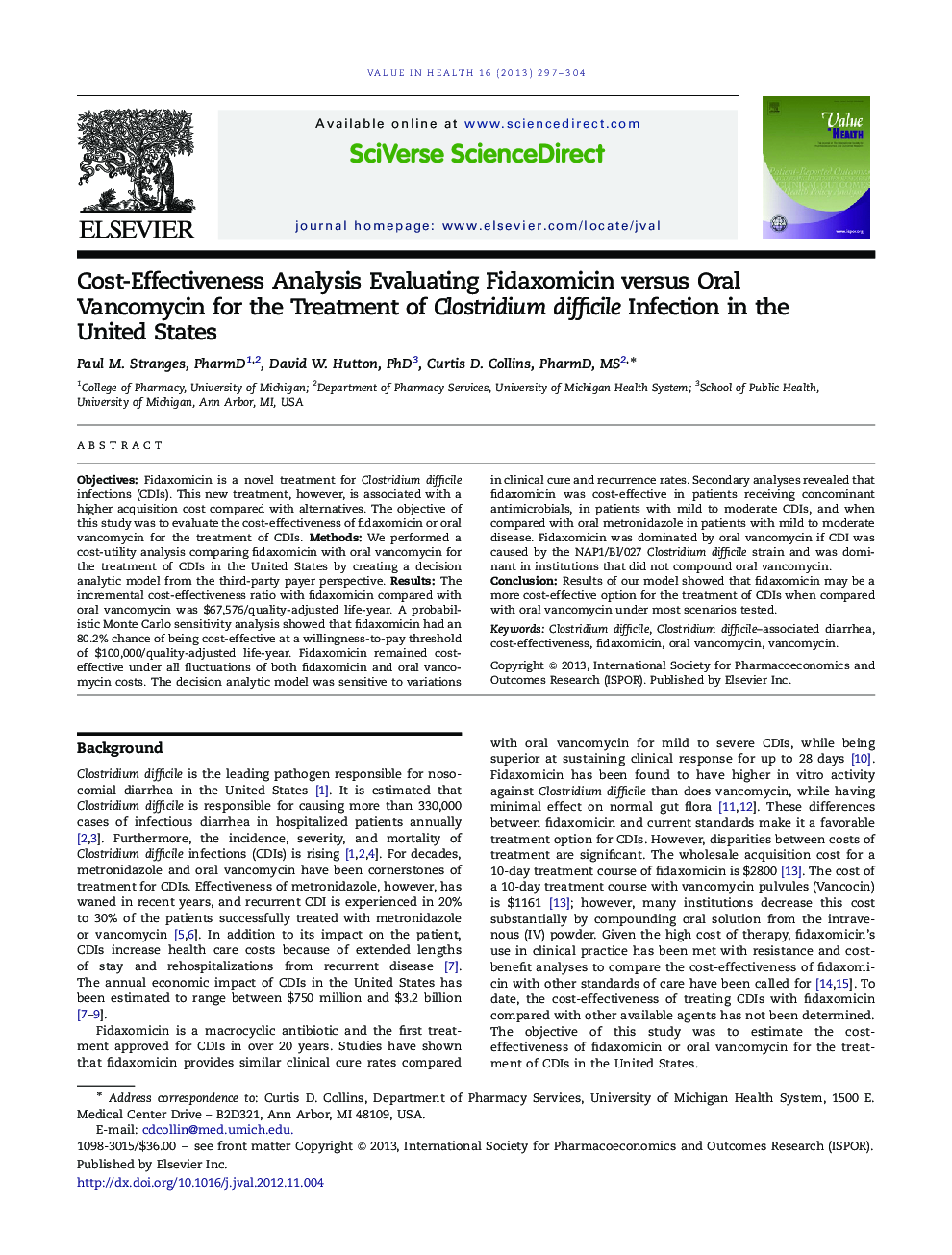| Article ID | Journal | Published Year | Pages | File Type |
|---|---|---|---|---|
| 989775 | Value in Health | 2013 | 8 Pages |
ObjectivesFidaxomicin is a novel treatment for Clostridium difficile infections (CDIs). This new treatment, however, is associated with a higher acquisition cost compared with alternatives. The objective of this study was to evaluate the cost-effectiveness of fidaxomicin or oral vancomycin for the treatment of CDIs.MethodsWe performed a cost-utility analysis comparing fidaxomicin with oral vancomycin for the treatment of CDIs in the United States by creating a decision analytic model from the third-party payer perspective.ResultsThe incremental cost-effectiveness ratio with fidaxomicin compared with oral vancomycin was $67,576/quality-adjusted life-year. A probabilistic Monte Carlo sensitivity analysis showed that fidaxomicin had an 80.2% chance of being cost-effective at a willingness-to-pay threshold of $100,000/quality-adjusted life-year. Fidaxomicin remained cost-effective under all fluctuations of both fidaxomicin and oral vancomycin costs. The decision analytic model was sensitive to variations in clinical cure and recurrence rates. Secondary analyses revealed that fidaxomicin was cost-effective in patients receiving concominant antimicrobials, in patients with mild to moderate CDIs, and when compared with oral metronidazole in patients with mild to moderate disease. Fidaxomicin was dominated by oral vancomycin if CDI was caused by the NAP1/Bl/027 Clostridium difficile strain and was dominant in institutions that did not compound oral vancomycin.ConclusionResults of our model showed that fidaxomicin may be a more cost-effective option for the treatment of CDIs when compared with oral vancomycin under most scenarios tested.
